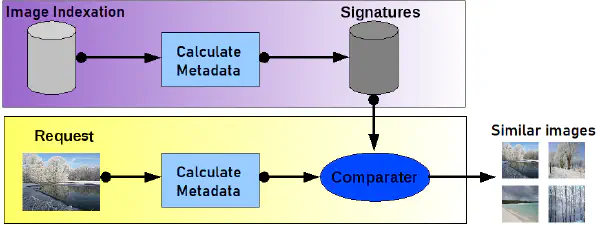
In today’s digital age, images have become an integral part of our daily lives. They serve as a powerful medium for communication, education, and entertainment. However, managing and retrieving relevant images from vast collections can be a daunting task. This is where content-based image retrieval (CBIR) steps in.
What is Content-Based Image Retrieval?
CBIR, also known as query by image content (QBIC) or content-based visual information retrieval (CBVIR), is a technique that utilizes computer vision algorithms to search for images based on their visual content. Unlike traditional text-based image retrieval methods that rely on keywords or tags, CBIR directly analyzes the visual features of images, such as color, texture, shape, and objects. This allows for more intuitive and accurate image retrieval, especially in cases where keywords may be inadequate or ambiguous.
How does CBIR Work?
The CBIR process typically involves the following steps:
Feature Extraction: The query image is analyzed to extract relevant visual features. These features may include color distributions, texture patterns, shapes, and object recognition.
Feature Representation: The extracted features are represented in a numerical format that allows for efficient comparison with other images.
Similarity Measurement: The feature representations of the query image and the images in the database are compared to determine their similarity. This may involve techniques like Euclidean distance or cosine similarity.
Retrieval: The images in the database are ranked according to their similarity to the query image. The top-ranked images are presented to the user as the search results.
Applications of CBIR
CBIR has a wide range of applications in various fields, including:
Image Search: Search engines can use CBIR to provide more relevant and accurate image search results.
Medical Imaging: CBIR can assist in the diagnosis and analysis of medical images, such as X-rays, CT scans, and MRIs.
Art and Cultural Heritage: CBIR can be used to classify, organize, and retrieve artworks, artifacts, and historical documents.
Multimedia Forensics: CBIR can help in identifying and analyzing images and videos in forensic investigations.
Remote Sensing: CBIR can be used to analyze and classify satellite images for environmental monitoring and disaster management.
The Role of Computer Vision
Computer vision plays a crucial role in CBIR by providing the underlying algorithms and techniques for feature extraction, feature representation, and similarity measurement. The advancements in deep learning and convolutional neural networks (CNNs) have significantly improved the accuracy and efficiency of CBIR systems.
Future of CBIR
CBIR is an evolving field with continuous research and development. The integration of artificial intelligence (AI) and machine learning (ML) techniques is expected to further enhance the capabilities of CBIR systems. Additionally, the growing popularity of personalized image search and the increasing availability of large-scale image datasets are driving the development of more advanced CBIR solutions.
Conclusion 🏁
Content-based image retrieval has transformed the way we interact with and manage digital images. By harnessing the power of computer vision, CBIR enables us to search for images based on their visual content, leading to more intuitive, accurate, and personalized image retrieval experiences. As the field continues to evolve, CBIR is poised to play an even more significant role in various domains, from everyday image search to specialized applications in science, medicine, and technology.